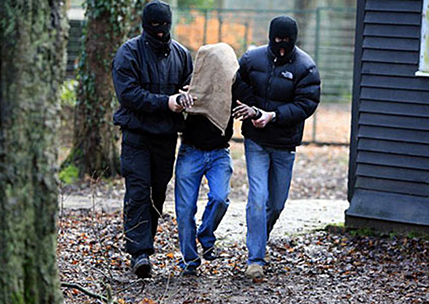Geographic profiling to thwarts tiger kidnappers

Mon, 24 Oct 2016 10:48:00 BST
Investigative psychologist interviews convicted criminals to observe patterns in the geographic profiling of tiger kidnapping
 AFTER interviewing dozens of convicted criminals, a University of Huddersfield lecturer has amassed and analysed data that could help police solve a range of serious crimes – including the offence dubbed “Tiger Kidnapping”.
AFTER interviewing dozens of convicted criminals, a University of Huddersfield lecturer has amassed and analysed data that could help police solve a range of serious crimes – including the offence dubbed “Tiger Kidnapping”.
Dr John Synnott (pictured right), who is a Senior Lecturer and Assistant Course Director for the Investigative Psychology MSc course at the University, has explored the distances and the journeys made by armed robbers after committing their crimes. In doing so, he has expanded the field known as ‘geographic profiling’, established as a useful tool in detection.
In his article describing the research, Dr Synnott focuses on tiger kidnapping, which he defines as “the abduction of a person of importance to a victim – generally a bank manager – in which that person is used as collateral until the victim complies with the requests of the offenders.”
“This is accomplished by using a picture of the victim’s loved ones under gun point, or, through the desperate persuasion of the victim to get the assistance of their colleagues, which may be necessary to complete the act. When the money has been secured the victim is then told of a location in which to meet the criminals to hand over the cash,” writes Dr Synnott.
There was a wave of these offences in Ireland and Dr Synnott, who is Irish himself, decided to investigate. In his article, he adds that: “One of the hallmark features of this crime is the vast number of individual locations which are incorporated within the offence. As a consequence, these features facilitate the possibility of a systematic analysis of the locations used and the spatial processes inherent to them”.
When Dr Synnott began his research, police forces north and south of the border provided data and he set up interviews with offenders in five jails in the Republic.
 “At the time there was no-one convicted of the offence of tiger kidnapping, so I interviewed armed offenders and asked how they managed their getaway from the crime and that gave us additional qualitative information that could be used to help with the interpretation of the quantitative data collected,” said Dr Synnott.
“At the time there was no-one convicted of the offence of tiger kidnapping, so I interviewed armed offenders and asked how they managed their getaway from the crime and that gave us additional qualitative information that could be used to help with the interpretation of the quantitative data collected,” said Dr Synnott.
Among his findings was that there were significant differences in the nature of tiger kidnapping in the North and South of Ireland. In the North, the perpetrators tended to be ex-paramilitaries, meaning that they remained within their communities and would keep victims in their own homes in some cases. In contrast, offenders in the Republic would move their kidnap victims a much greater distance away from the initial kidnap location.
The convicted criminals interviewed by Dr Synnott provided him with many insights, for example on how getaway routes are planned. And although the article describes research into tiger kidnapping, the findings have wider relevance, by expanding the remit of geographical profiling.
Until now, this has been largely restricted to making predictions of the residential base of an offender, according to the article.
But geographic profiling should go further, argues Dr Synnott, extending “to a study of criminal geography generally; for example understanding where offenders travel to after crime and why they might choose one location over another. Understanding criminal geography in all its forms will naturally contribute to any prediction based models on the residential location of offenders and beyond.”
- The 2016 article Variations in the Journey from Crime: Examples from Tiger Kidnapping, by John Synnott, David Canter, Donna Youngs and Maria Ioannou, is in Journal of Investigative Psychology and Offender Profiling.







